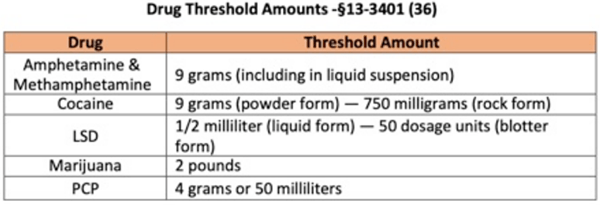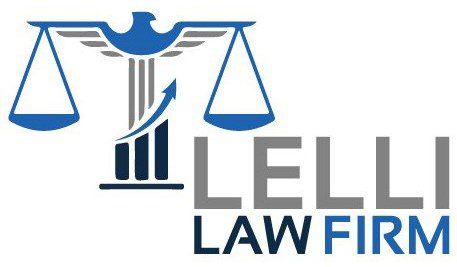Have You Been Charged With a Drug Offense?
In general drug charges are separated into two types. The first is those involving possession for personal use and the second is larger quantities, possession with the intent to distribute or sell. Arizona law separates drugs into dangerous drugs or narcotic drugs.
A.R.S. 13-3407 – Possession of Dangerous Drugs
Under Arizona law, dangerous drugs are defined in A.R.S. 13-3401. Some examples of common dangerous drugs include:
- Methamphetamine (Meth)
- Amphetamine (Speed)
- Alprazolam (Xanax)
- Carisoprodol (Soma)
- MDMA (Ecstasy/ Molly)
Possession of a dangerous drug is a class 4 felony. Charges of over the threshold requires time in the Department of Corrections but probation is required for 1st or 2nd strike possession or use, except for Meth.
A.R.S. 13-3408 – Possession of Narcotic Drug
Under Arizona law, dangerous drugs are defined in A.R.S. 13-3401. Some examples of common narcotic drugs include:
- Heroine
- Opium
- Cocaine
- Fentanyl
Possession of Drug Paraphernalia – A.R.S. 13-3415
Generally, drug paraphernalia is a charge that is commonly associated with possession of a certain drug. However, even if you are not in possession of any kind of drug you can be charged with paraphernalia.
Drug paraphernalia includes any objected that is associated with the use, preparation, or function of a drug. Common examples include:
- Tin foil
- Baggies
- Glass pipes
- Wrapping wrappers
- Possession of drug paraphernalia is a class 6 felony.
Drug charges vary and depend on the type of drug and the quantity. Drug charges over the threshold amount carry significant more penalties than under the threshold amount.
Drug Threshold Amount – A.R.S. 13-3401(36)
It is unlikely that if you are arrested with a small amount of drugs that the government will charge you with intent to sell/ transport. The statute does not define what qualifies as possession for sale of transportation for sale. Therefore, the government will look at the number of drugs, how they were packaged, how and when you are arrested.
- Possession of Dangerous Drugs or Narcotic for Sale is a class 2 felony.

Felony Sentencing Chart in Years
The “P” in the middle stands for presumptive term, which is where a sentencing judge will start. To the left of the Presumptive term is the MIT (Mitigated) and MIN (Minimum). TO the right of the Presumptive is MAX (Maximum) and AGG (Aggravated). The sentencing judge has discretion on whether to sentence above or below the presumptive term.

Methamphetamine is the only drug that has its own range. Methamphetamine carries a mandatory flat time in the Department of Corrections A.R.S. 13-3407. Flat time means that you will not be eligible for early release and the amount sentence will be counted day for day.
The presumptive of flat time for methamphetamine is 10 years with 5 years being the lowest and 15 years being the highest a Judge can sentence for a first offense. A second offense carries a presumptive of 15 years and the Judge can sentence you as low as 10 years or as high as 20 years.
There are multiple drug offenses that a person can be charged with. It is important that you obtain the representation you deserve. If you or someone you know has been charged with drug charges, contact our office today to schedule a complimentary case evaluation.
What Kinds of Consequences Could I Face?
Since drug crimes range from simple possession of a small amount of a controlled substance to drug manufacturing and trafficking, penalties can range from remanding you to a treatment program to spending years in prison. No matter what charges you face, our drug crime lawyers will fight aggressively against them. We'll do everything possible to have the charges dismissed or reduced or to achieve a positive outcome at trial. It’s important that you get legal help right away. Contact our office for a consultation now.



